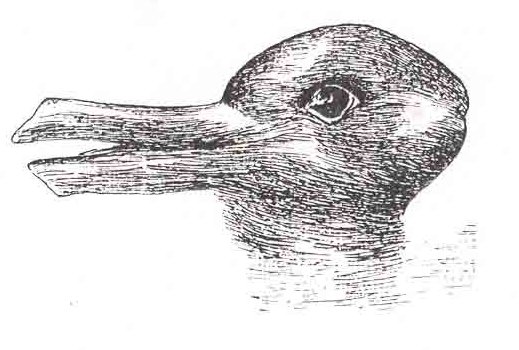The well-known known illusion above can be seen in two ways: as both a duck and a rabbit. Which do you see first? And if you see one, can you also see the other?
Most people see the duck first and can flip between the two representations, but the question is: how easy is it for you to flip between them? Does it require real mental strain, or can you do it at will?
Wiseman et al. (2011) had a hunch that the ability to flip between representations is related to creativity.
To test this participants were given a simple test of creativity which involves listing as many novel uses as you can for an everyday object in two minutes.
Take for example, a chair: yes you can sit on it but that’s not a novel use. You can also stand on it which is a little more novel. Much more novel is using it to build a home-made fort, burning it to fight the cold or hitting someone with it in a bar-room fight.
The more of these examples you can come up with in an allotted amount of time, typically the more creative you are (try it, it’s good fun).
In the study participants were then asked how easy they found it to flip between the rabbit and the duck in the illusion above.
What Wiseman et al. found was that participants who found it very easy to flip between rabbit and duck came up with an average of almost 5 novel uses for their everyday item. Those who couldn’t flip between rabbit and duck at all came up with less than 2 novel uses.
This suggests that the ease with which you can flip representations is a clue to how creative you are. The moment when you flip between duck and rabbit is like a small flash of creative insight. It’s when you notice the world can be seen in a different way.
Highly creative people often display this talent for finding new uses for an existing object or by making connections between two previously unconnected ideas or things.
If you want to try Guilford’s Alternative Uses Task, then remember it’s two minutes to think up as many alternative uses as you can for an everyday object like a brick or a paper-clip. Also, you need to know this about the scoring system:
“Multiple novel but similar responses were combined and given just a single point. A response was judged as similar if it fell into the same functional category. For example, ‘a ring’ and ‘an earring’ for the paper-clip both fall into the category jewellery, so would be assigned only one point.”
So it’s not as easy as you think!

